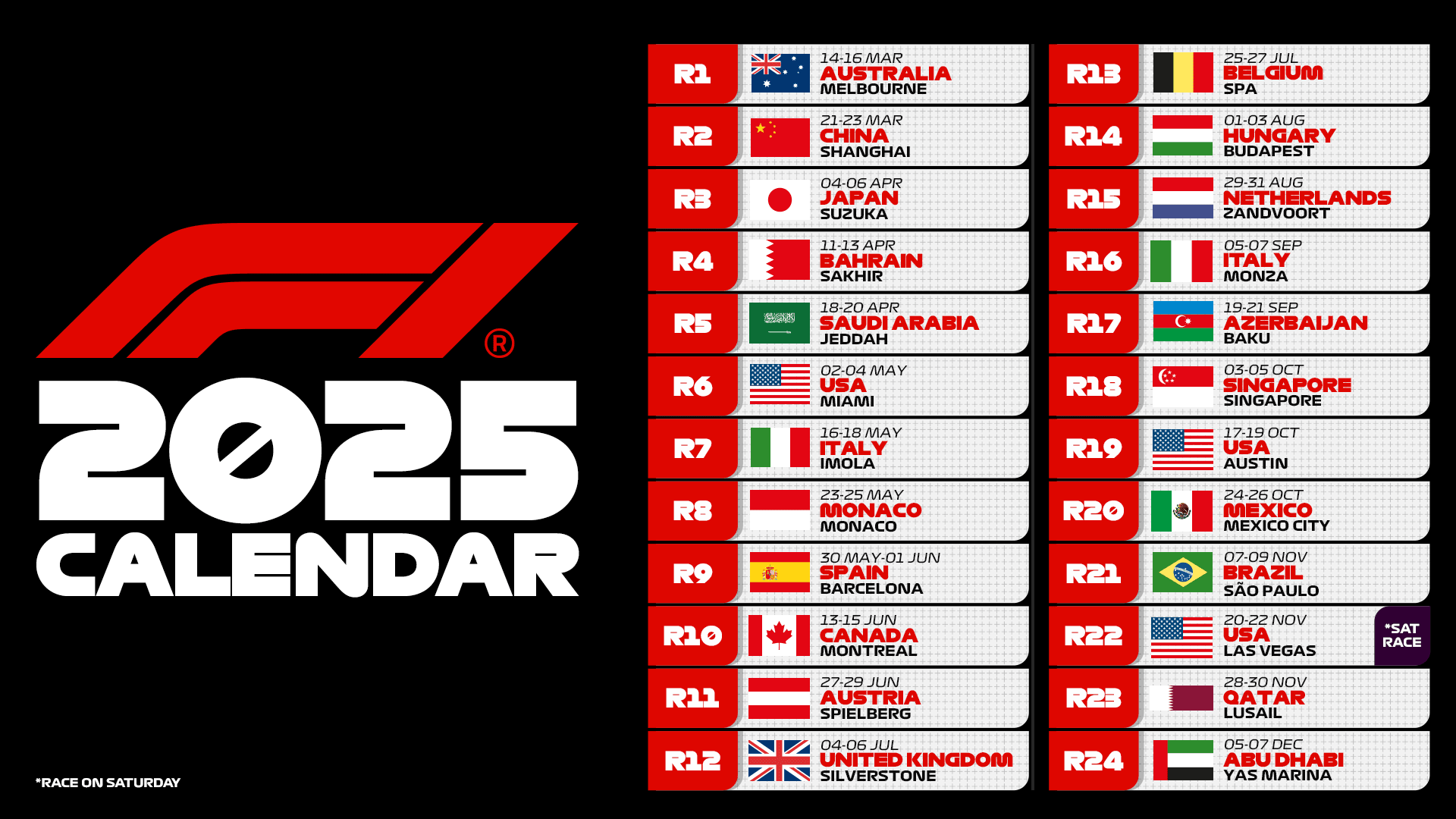A lengthy discussion with Enrico Cardile has offered a snapshot of Ferrari’s 2023 season. The technical director of the ‘chassis’ area explained the choices and decisions of a challenging season, an analysis that reveals how the work done (in Maranello and on the track) aimed to improve the SF-23’s performance while laying the foundation for the car we will see on the track next season.
The limits of the 2023 car were immediately apparent to the Scuderia technicians in pre-season testing, as well as the inability to intervene as they would have liked due to structural limitations in the chassis and gearbox.
This initiated a comprehensive effort across all areas, with the awareness that overturning the situation wouldn’t be possible, but there was an opportunity to learn from experiences race after race. All efforts will converge on the 2024 car, a project that marks a significant change in direction.
Let’s start with the general concept of the SF-23 and how it was developed compared to the previous season. When the 2022 car was presented, you confirmed confidence in a different approach from the competition, and it seems that in 2023, you continued on that path…
“Yes, that’s true. The 2022 car was developed based on a specific concept, and the car’s shape was a consequence of what we wanted to achieve. The SF-23 was developed in continuity with the 2022 car, with the goal of improving some limitations of the previous car.”
“Overall, we achieved our goal because the car on the track met the results seen in simulations. So, from that perspective, there were no surprises. The problem was that already in pre-season testing, we realized that the direction we had taken was not the most performant, the most profitable. At that point, we had to revise our goals regarding aerodynamic development and work to address the shortcomings.”
“The first step was the update package brought to Spain, where we changed the floor and bodywork, followed by another upgrade in Austria. Then we encountered limits related to the chassis. With the 2024 car, we will turn the page; the project is different. We understood that to achieve our goals, we need a different car. Consequently, next year, you will see a car designed differently from the concept brought to the track in 2022.”
Show your support for Scuderia Ferrari with official merchandise collection! Click here to enter the F1 online Store and shop securely! And also get your F1 tickets for every race with VIP hospitality and unparalleled insider access. Click here for the best offers to support Charles and Carlos from the track!
Show your support for Scuderia Ferrari with official merchandise collection! Click here to enter the F1 online Store and shop securely! And also get your F1 tickets for every race with VIP hospitality and unparalleled insider access. Click here for the best offers to support Charles and Lewis from the track!
What were the limitations of the chassis and gearbox that prevented you from developing the car as you would have liked?
“The limitations were mainly related to the chassis. The difference between our car and those in the Red Bull style lies in the radiator inlets, commonly known as pods. The design of this area on our car was wider than that of Red Bull, but there is a reason for that. We used this area of the bodywork to modify air pressure parameters with the goal of controlling the [dirty] wake from the tires.”
“On the other hand, by digging into the area beneath the radiator inlets, you can direct airflow better towards the rear of the car, with benefits in terms of downforce at the rear. But in doing so, you have to find a way to regain control of the wake from the tires. Adding the wider pods, in the end, meant we didn’t need to design a particularly complex chassis because we mounted the electronics behind the radiators. Additionally, we decided to place the lower side impact structure at the highest point allowed by the regulations, to have a design that allowed us to gain more performance from a cleaner surface on the upper part of the front floor.”
“However, when you decide that you need different shapes to achieve a different goal, the position of the electronics, the chassis design, and the position of the lower side impact cone became limitations.”
We have seen many cars this year struggling in windy conditions. However, the Ferrari seemed to suffer more in this aspect. Is there a technical reason?
“It depends on the aerodynamic map. Inherently, every Formula 1 car loses downforce when an angle of yaw is applied to the car. This is natural and depends on the fact that we have exposed tires and the consequent management of the wake from the tires. The problem is understanding how much downforce is lost. Wind amplifies the yaw angle, so the more downforce is lost, the more wind affects the car. Everything is due to the aerodynamics of the car.”
Will there be corrections on the 2024 car to address this issue?
“Certainly, because the driver’s confidence depends on this factor as well. Under the right conditions, we have good performance, and aside from a Red Bull that was flying compared to us, they are not at all bad. However, when wind is added to a certain yaw angle, the driver loses confidence because they don’t know when there will be a gust of wind, the direction it will blow, and how it will affect the car’s behavior.”
Throughout this season, all cars, except for Red Bull, seemed to have a relatively narrow operating window. In Ferrari’s case, the best performance was seen in qualifying, while Mercedes performed better in the race. Is there an explanation?
“No. We believe we know why our performance was worse in the race. We believe it is related to the aerodynamic map and downforce, but it is less straightforward to understand the reason for the performance difference between qualifying and the race. We have seen this behavior on the Mercedes since the end of last year, with better race performance compared to qualifying, but I don’t have a precise answer to this question.”
What have you been able to do during the season to widen the car’s operating window? Despite the limitations imposed by the car’s architecture, it seems that you have made progress in tire management…
“In our case, being aggressive would have meant creating a new chassis and a new gearbox, essentially a new car, but this solution was not feasible. The tire wear issue was once again related to the aerodynamic behavior of the car. Everything depends on aerodynamics. Unless the suspension design is completely wrong in terms of kinematics or other aspects, it doesn’t have as significant an impact as aerodynamics. When designing a suspension, you anticipate the necessary configuration options to cover a wide range of adjustments to allow the car to operate in the best aerodynamic window.”
One of the goals of the 2023 car was to eliminate or drastically reduce the bouncing issue. In this case, the situation seemed to improve over the course of the season.
“We immediately saw a significant improvement compared to 2022, but we still started the season with some bouncing. Porpoising is a disturbance for the driver and somehow limits the car’s operating window because if you are forced to manage a bouncing car, you always have to consider the wear on the floor. We certainly started the season with some issues, but with the developments, I would say we got rid of them almost completely.”
We saw a big difference in terms of competitiveness between slow and fast corners this year. Is it an aerodynamic issue, or is it a mechanical characteristic determining this performance difference?
“The strength of our car was performance in slow-speed corners, but we paid in medium-speed sections and a bit in high-speed corners. In 2022, it was the opposite, so aerodynamic development was directed towards improving performance in slow-speed corners.”
With this generation of cars, is it impossible to create a car that can deliver good performance in all types of corners?
“No, Red Bull is proving that it is not impossible; it’s just a matter of hard work with the right goals.”
Especially during 2023, the impression is that this generation of cars is more challenging to understand because a significant part of performance depends on what happens in the small space between the floor and the asphalt…
“I wouldn’t say more challenging, but there are peculiar aspects related to the technical regulations. There are three basic aspects in the development of this generation of cars. One is undoubtedly bouncing because it limits the design in terms of what you can do. You are obliged to consider that the car must not bounce in a straight line and in high-speed corners.”
“The second aspect is the nature of the regulations, which is much more restrictive. You have less freedom available to develop the car, and the last aspect is sensitivity. The floor is an extremely sensitive area, and even a small variation results in significant changes because you multiply them over a very large area. These are, for me, the three main peculiarities of these regulations, but I wouldn’t say they are more challenging; they are just different.”
Regarding the sensitivity of the floor area, is it true that even the roughness of the asphalt can make a difference in the flow efficiency?
“Yes, absolutely. We see this by comparing wind tunnel data with references coming from the track.”
When you brought the latest floor specification to Suzuka, Charles found a good feeling with the car. Is the driver’s driving style a parameter taken into account in the development program?
“We consider the confidence that the driver must have as essential, certainly. But it’s not a matter of driving style because the driver constantly adapts to the conditions or characteristics of the track. After the experience with this year’s car, we are aware of what helps make the driver feel safer behind the wheel. Then there are always those who are more focused on stability, as well as other drivers who are less sensitive, but we’re not talking about huge differences.”
Both drivers and some team members have talked about a turning point during the Zandvoort weekend. What happened that weekend?
“It’s a bit of a long story. In Spain, we encountered an unexpected behavior of the car in terms of aerodynamics. Later, the problem reappeared in Hungary, and in the meantime, we had developed some hypotheses about what was happening, working at home with CFD and wind tunnel. We decided to conduct an experiment in Zandvoort because we knew that some characteristics in terms of downforce and asphalt would be similar to those in Spain and Hungary. What we achieved was a better understanding of the car’s behavior. So we refined all our tools to enhance the understanding of the car, and from that moment on, we managed to anticipate any issues without being taken by surprise. But the real advantage will be transferred to next year’s car.”
We have seen differences in how various cars manage to bring the front tires to temperature in qualifying. Ferrari seems to do this very well. What is the reason for this difference?
“I can only make assumptions because I am not in the other teams’ garages. From my point of view, it depends a lot on how you prepare for the qualifying lap. If we look at Pirelli’s reports on temperatures and pressures, I usually don’t see significant differences. So, it depends on what you want to achieve during the preparation lap, whether you want the tires ready already in turn one or if you prefer to keep the tires in good condition for the last sector, as there are circuits where it is difficult to control the tires throughout the lap. But it’s just a hypothesis.”
When you had the opportunity to observe photos of your opponents’ floors, as was the case with Red Bull in Monte Carlo, is it something that directs you towards new solutions, or since Red Bull has a different concept, is it difficult to learn something?
“Analyzing other teams’ solutions is part of the job. Everyone has photos in their respective databases to keep an eye on opponents, to understand what they are doing. Certainly, it was interesting to see the Red Bull floor because you ask yourself questions and understand where the differences are.”
“But just looking at a photo is not enough; you have to look at it with the right perspective, have a direction in terms of development. You can’t make a perfect copy; it has never worked, especially with these regulations where even a few millimeters can make a huge difference in terms of performance. Let’s say it doesn’t make sense to make a copy, but you certainly ask yourself questions, and maybe it can be inspiring.”
How effective are simulation tools considering that much is at stake in millimeters and that even asphalt characteristics can make a difference?
“In general, we are happy with the level we have reached recently with our tools, so I mean CFD, simulator, and wind tunnel. If we ask the right questions, the tools give us the right answer. We have seen that the correlation is very good for us, on all the tools available. When unexpected events occur that we don’t understand, being able to use our tools correctly allows us to improve understanding and identify the problem.”
The second season under the budget cap has just concluded. Was the impact of the cost cap similar to last year, or have you managed to optimize things better?
“We continue to optimize the process. I would say that the big difference was seen in the first year; we had to change our mental approach, having to consider the ‘cost’ aspect of each activity. Now there is a greater understanding of the financial regulations. If you ask me if this year we were limited by the financial regulations, the answer is no.”
When it is highlighted that the gap to Red Bull is much smaller in qualifying than in race pace, we often hear that the new soft tire has more grip, helping compensate for some weaknesses of the car. On the other hand, we could say that the new soft tire could give Red Bull even more grip than Ferrari or Mercedes. How do you explain this behavior?
“Our performance is more fragile. In terms of pure performance, we are not very far from Red Bull, but we need maximum effort from the driver, we need the right environmental conditions and the right combination of corners. We need many aspects, which makes it difficult to repeat a certain performance during a stint in the race when the tires start to degrade, and the car’s balance and the wind change. The impression is that the Red Bull platform is more robust than ours.”
In the ‘sprint’ weekends, the correlation between track and simulator seemed good this year. Are you satisfied with the level reached?
“Absolutely. We consider our race preparation a strength. The way we prepare for the event, arriving ready for the weekend with the car already close to its ideal window, is undoubtedly a positive point for us. The correlation is good, and we are satisfied with the tools we use. In general, I think it is a strength of ours.”













.png)

Leave a Reply